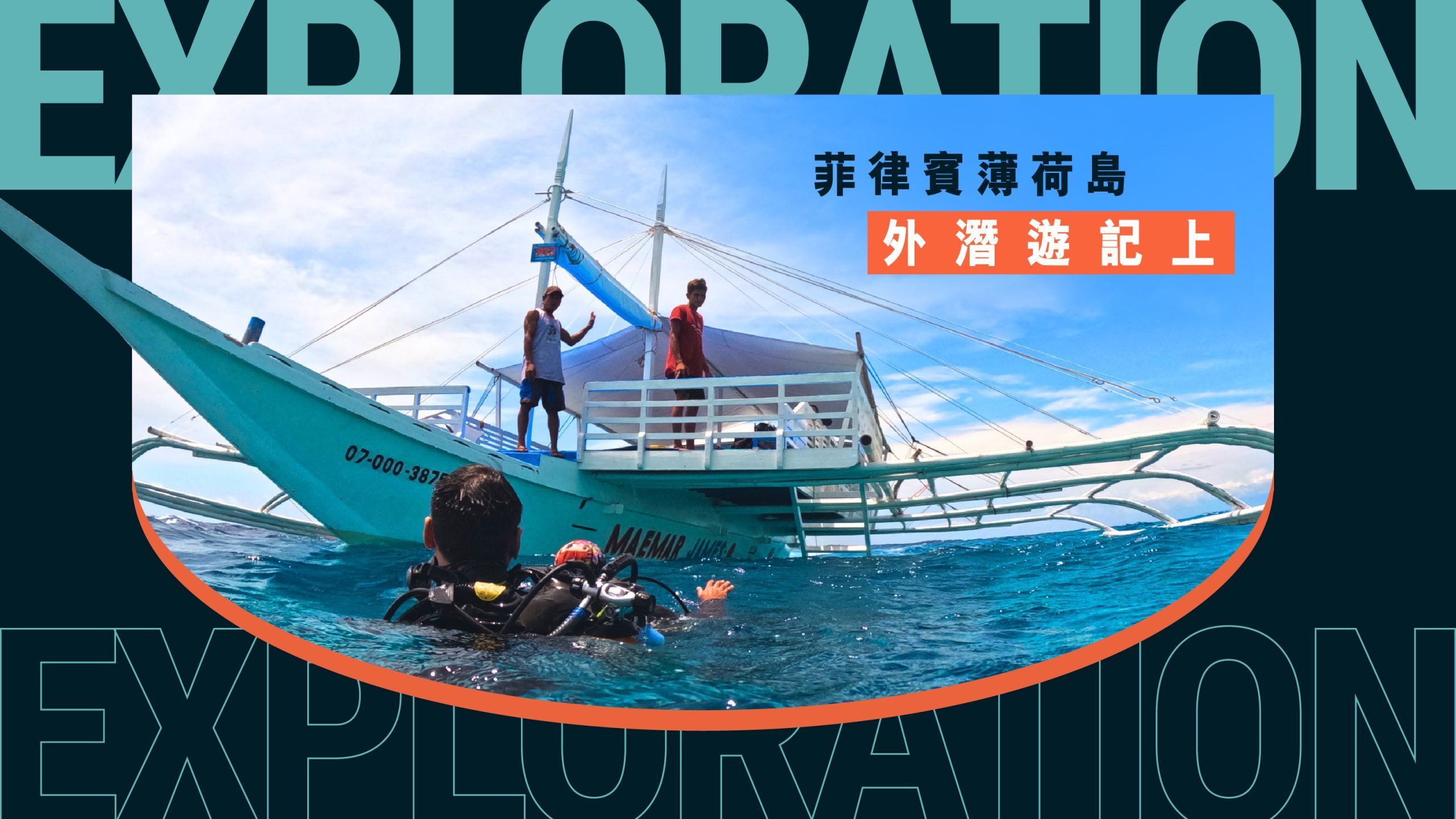Recently, the temperature in Hong Kong has dropped, and the diving season in Hong Kong is fast approaching. Many diving instructors in Hong Kong are organizing their own diving trips to various places around the world. The Philippines is a popular destination for winter diving. After visiting Puerto Galera in April, I visited another diving paradise in the Philippines, Bohol, in October.
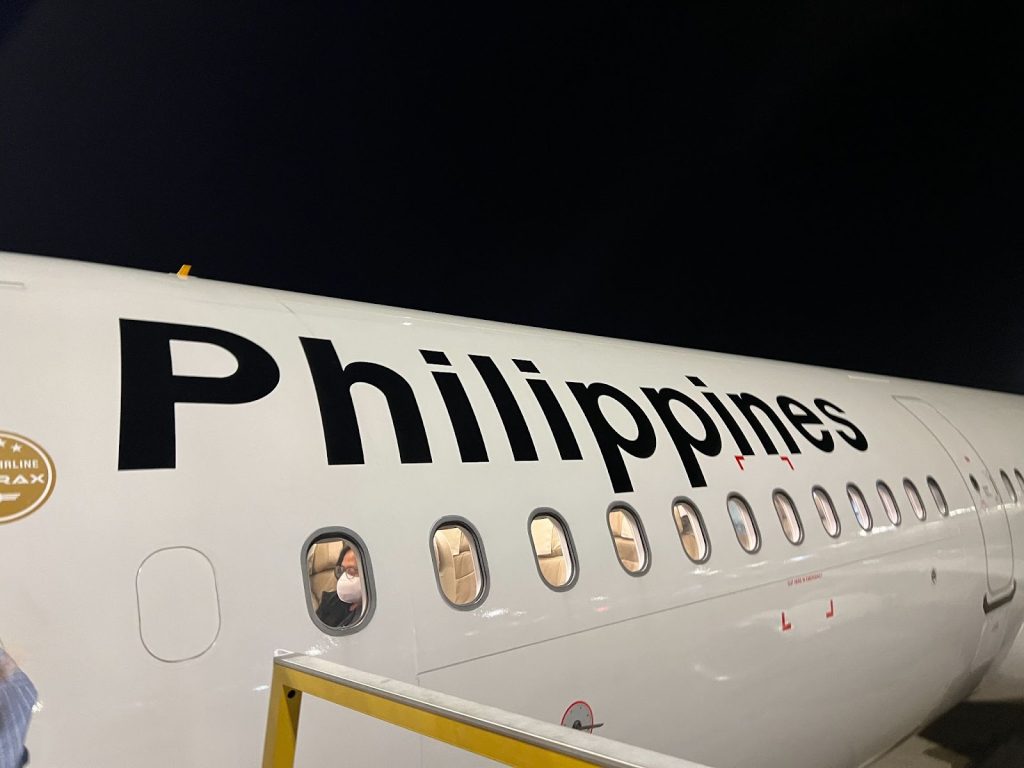
Even my non-diving friends asked me why everyone loves diving in the Philippines. Aren’t they afraid of danger or poor equipment? In addition to sharing the itinerary of the first day of diving in the Philippines, this article will also explain the charm of diving in the Philippines and why everyone praises the five-star service provided by local diving operators.
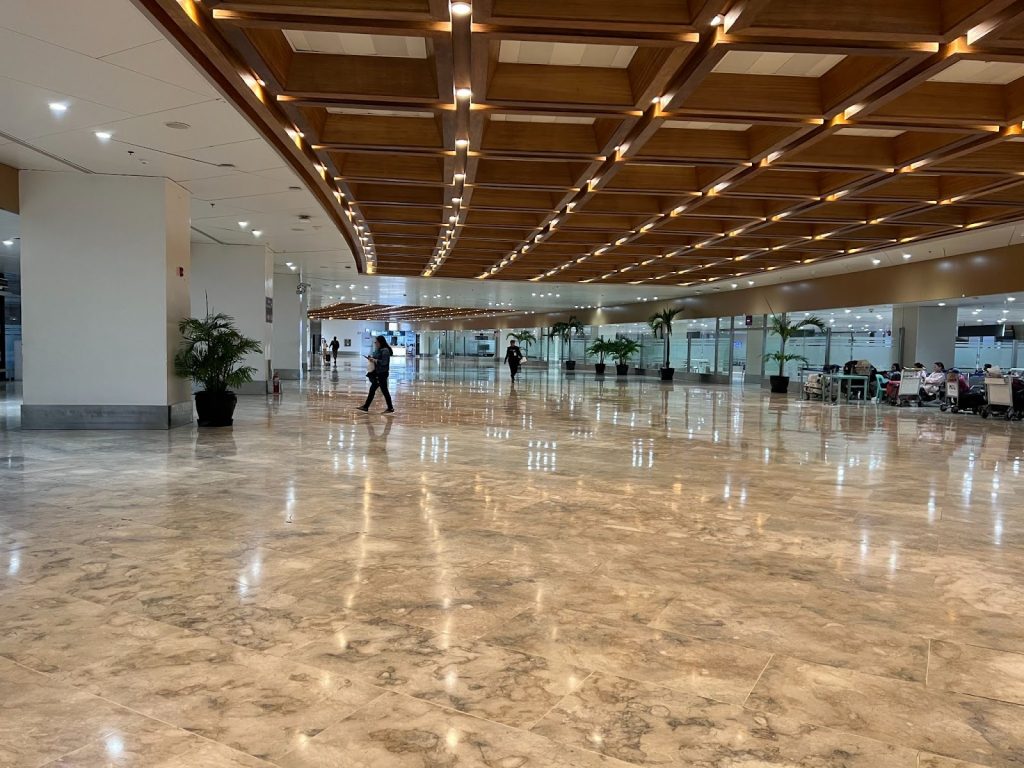
We took Philippine Airlines to Manila airport and waited for the connecting flight to Tagbilaran International Airport (TAG) the next morning. The journey with a layover takes about 11 hours.
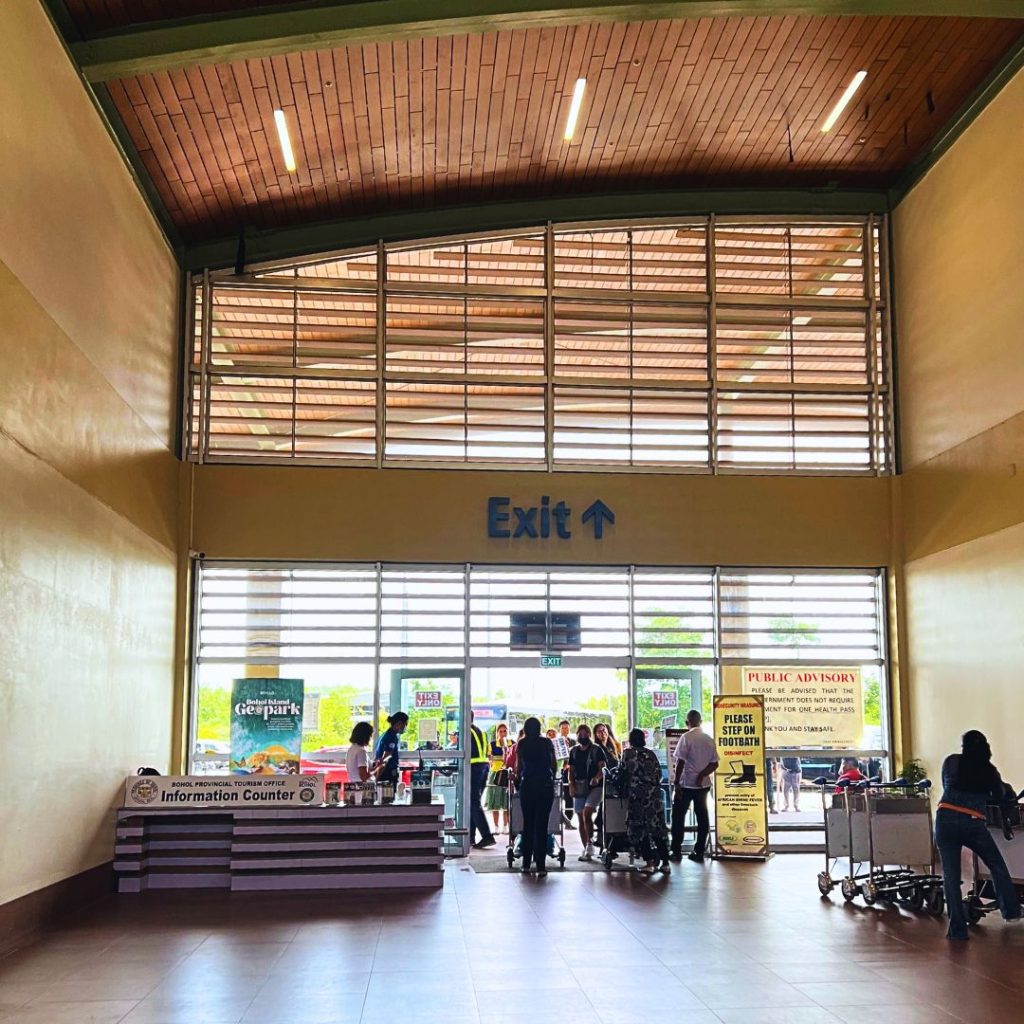
Tagbilaran International Airport is simpler than Manila airport. After arriving, we took a pre-booked car and arrived in Panglao in just 15 minutes. Panglao Island is located southeast of Cebu and is one of the provinces in the Central Visayas region of the Philippines. Since the 1990s, the diving industry has flourished, attracting countless diving enthusiasts and becoming a popular destination for international divers.
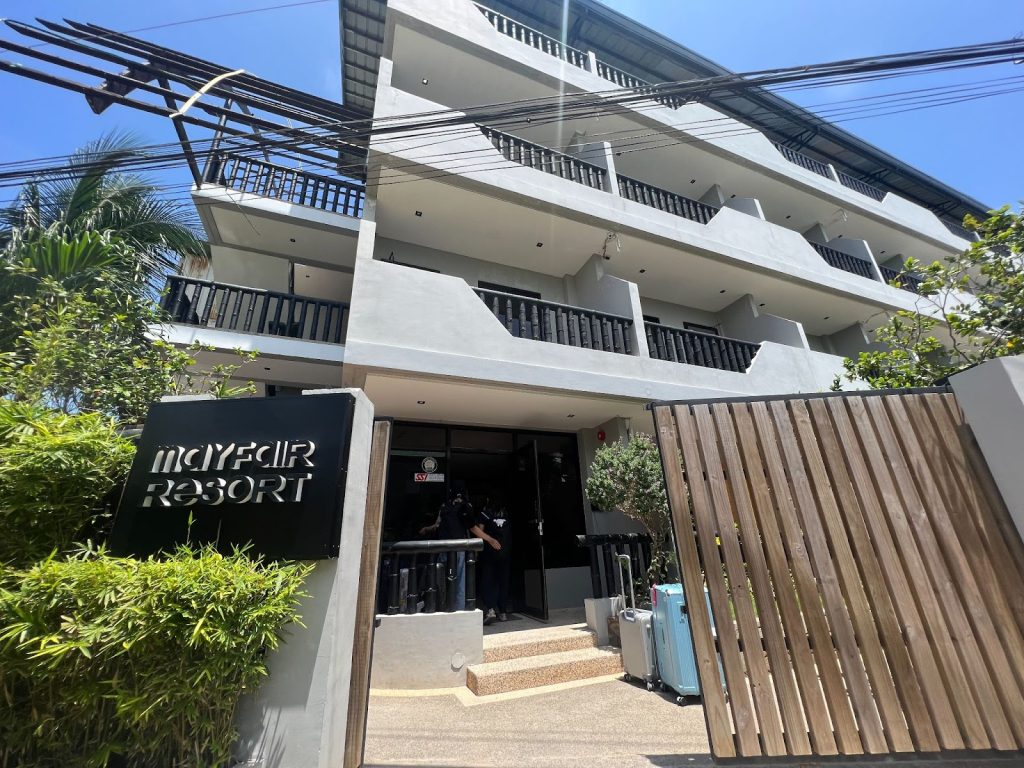
This time on Bohol Island, we stayed at Mayfair Resort, a diving resort owned by a Hong Kong person named Ah Fai. He came to the Philippines ten years ago to operate diving tourism-related businesses. Mayfair Resort consists of two white buildings and a diving training pool, with only 24 rooms. Although it is small in scale, it is very suitable for teams to come for external diving training.
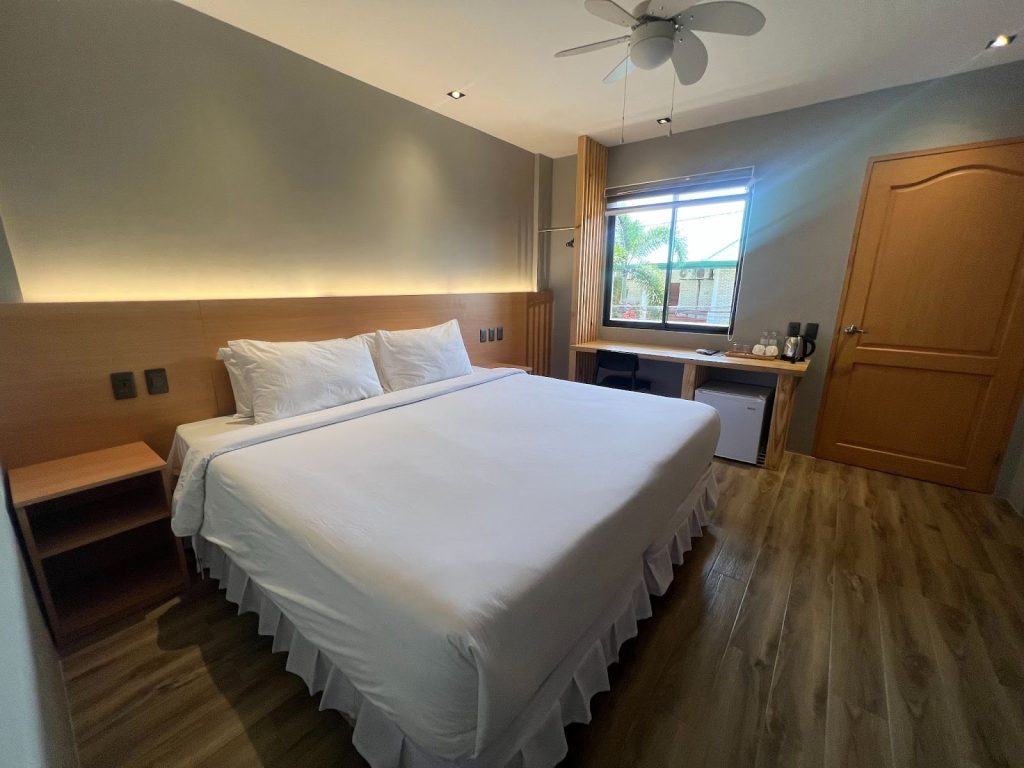
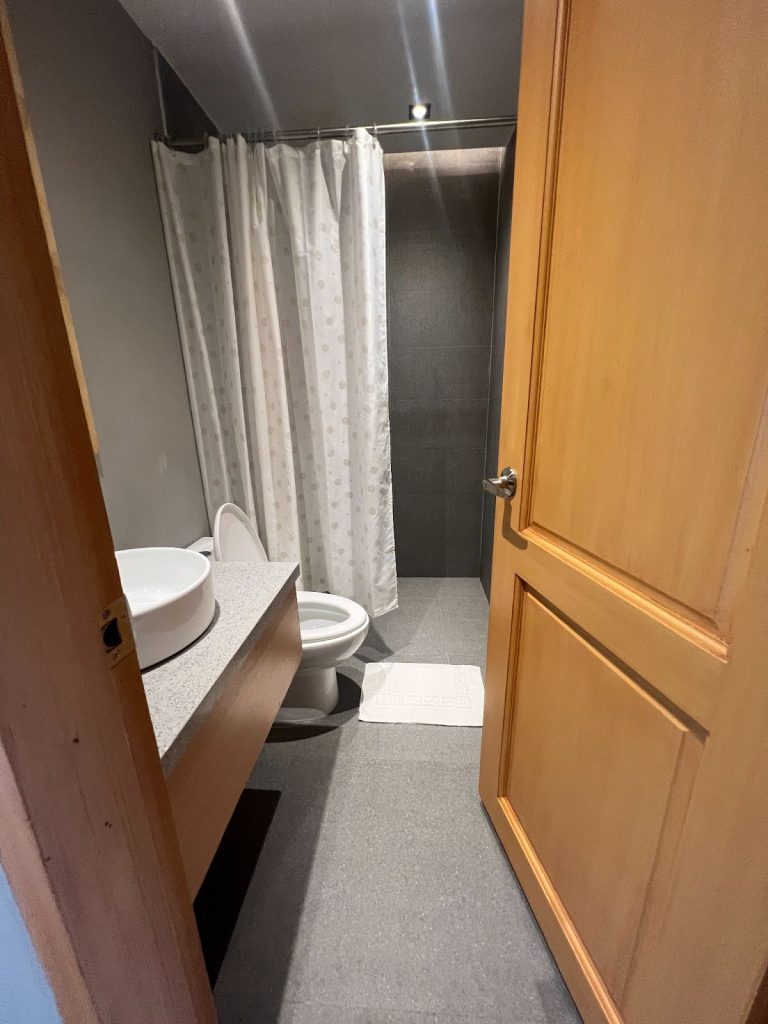
The hotel rooms, bathrooms, refrigerator, and coffee facilities were all very clean and well-maintained, which was impressive.
The pier was about a 10-15 minute walk away, but they arranged transportation for us to and from the pier with our diving equipment. We didn’t have to walk back carrying heavy gear. The resort had a great vibe. During check-in, guests received a briefing on the diving day’s operations and could choose their breakfast and lunch for the next day. The hotel provided each person with a basket to store their personal diving gear, which would be delivered to the dive center on the diving day.
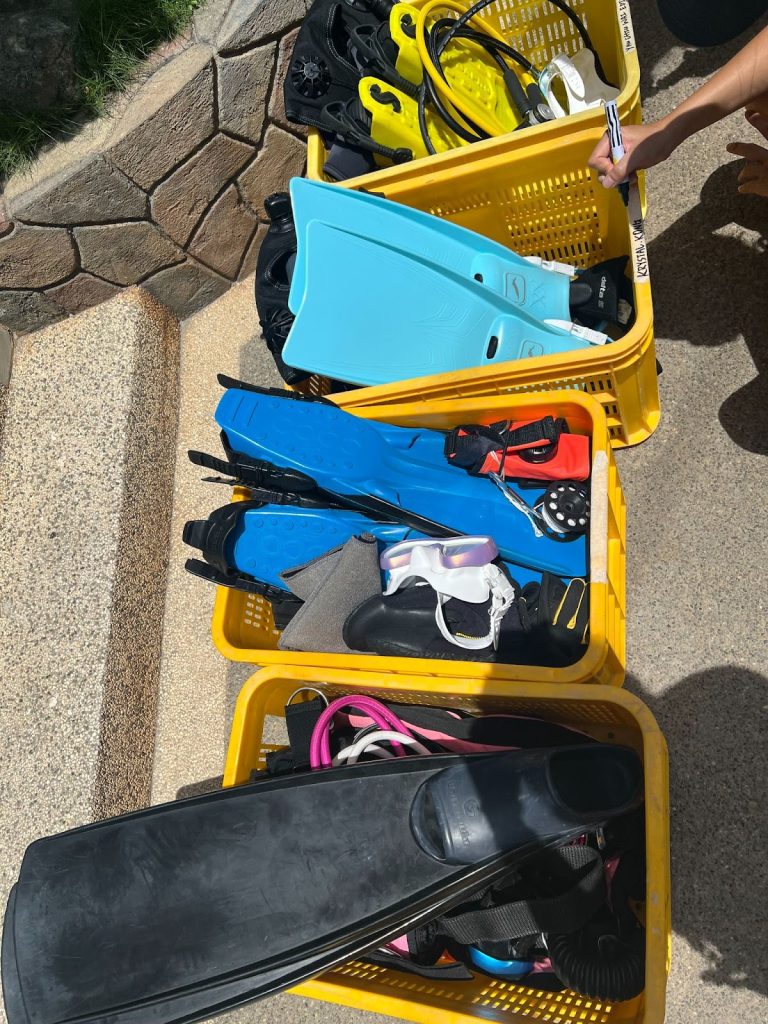
After settling in upon arrival, we changed into our swimsuits and got ready for the first dive, the check dive! Once on board, the instructor or dive guide would provide a dive briefing and dive planning. The check dive is usually used to assess your skills and determine the appropriate weight distribution. Alright, we were ready to go! (If you want to know what we saw during the check dive and the dives on the first day, stay tuned for the next diving journal entry.) Next, I will share more about the diving services in the Philippines, including the processes, value for money, and the attractions that attract divers from Hong Kong and around the world.
The Reason Most HK Divers Love Philippines Diving Centre Service
Based on my two diving experiences this year, my diving instructor often shared his personal experience: the Philippines offers “five-star” scuba diving services, with stunning dive sites and a wide variety of marine life. In addition, compared to other countries, the cost of living is very affordable, making it a highly cost-effective diving destination.
For example, on my 6-day diving trip to the Philippines this year, it cost around HKD 10,000 to HKD 12,000. Approximately HKD 6,000 was spent on dive shop expenses, over HKD 2,000 on flights, and around HKD 3,000 on food, drinks, transportation, and souvenirs.
Divers often praise the Philippines for its top-notch service. Local dive centers go the extra mile by collecting your diving equipment and bringing them to the boat, ensuring that everything is properly prepared for your dive. The staff is always eager to assist you with any equipment-related issues, demonstrating their exceptional dedication.
When it’s time to gear up for a dive, the local team provides exceptional support. They are incredibly attentive, helping you effortlessly don your BCD and cylinder equipment. Your fins seemingly “automatically assemble” themselves (though it’s a bit of an exaggeration) thanks to the staff’s meticulous assistance. After the first dive, they take care of tasks like changing your air cylinder, allowing you ample time to relax and recharge.
Comparatively, in Hong Kong, whether you’re participating in a fun dive or learning to dive, as a scuba diver, you are responsible for preparing your own equipment. From carrying it from home to the Sai Kung pier, to changing cylinders and organizing your gear after a dive, you typically only have minimal assistance before entering the water. However, in the Philippines, the level of support provided by the dive centers far exceeds expectations.
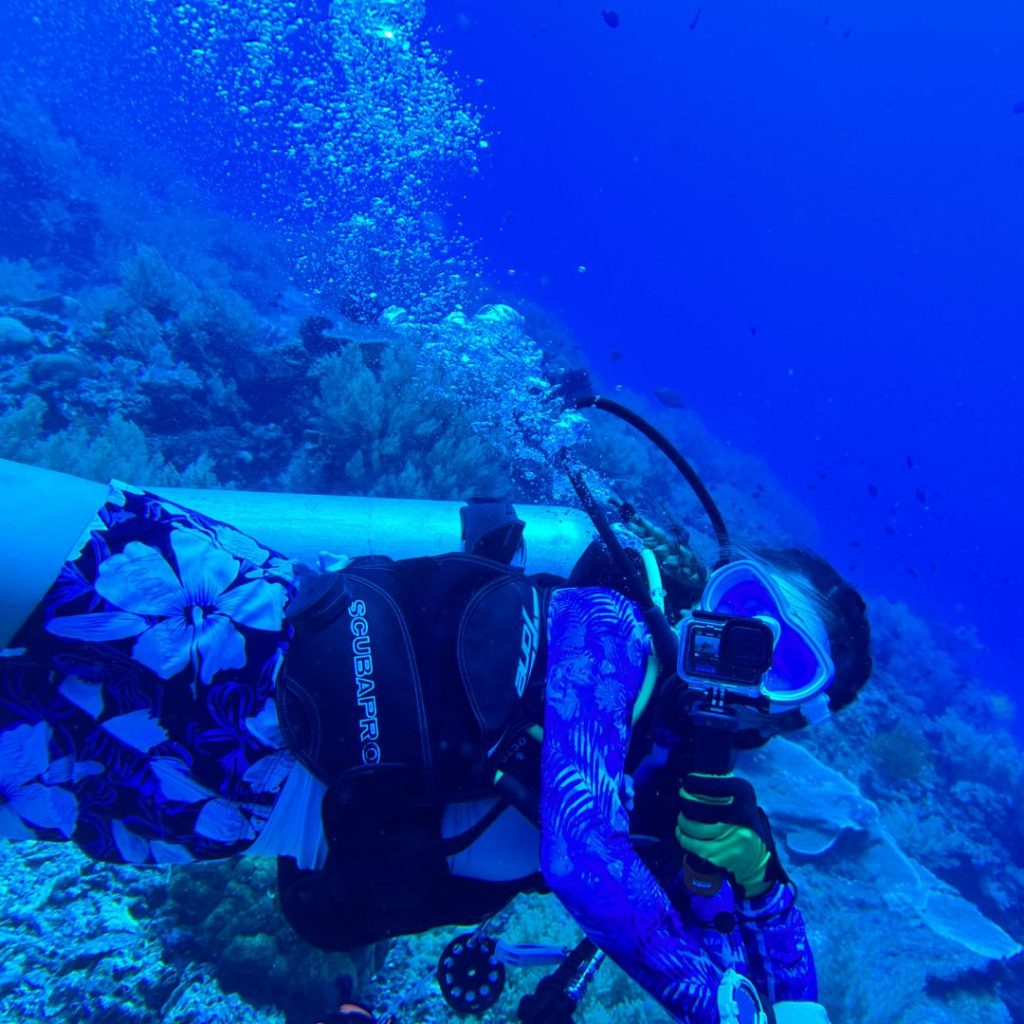
Pic: This time I brought my Go Pro 11 to shoot underwater. Remember to use a diving case before diving, and put the rubber band tightly around your wrist before diving. Otherwise, if you’re not careful, your “Go Pro” will sink into the sea.
In my opinion, one of the most exhausting aspects is carrying wet and heavy equipment for an hour-long car ride and then walking back home (it’s like a weightlifting session). However, you can opt to use a diving basket to store your equipment, which makes transportation relatively easier.
Is it suitable for girls to travel together to Phuket Island for diving?
Panglao Island in Bohol, where we chose to stay this time, has been a well-established tourist destination for quite some time. As a result, it boasts a higher number of tourists and a more concentrated range of activities. For instance, you’ll find many restaurants owned by foreigners, Korean supermarkets run by Koreans, and other tourist facilities that are quite comprehensive. Restaurants and daily necessities are conveniently concentrated in one area, while bars and additional dining options are centered around Alona Beach. This creates a sense of safety and security that may be lacking in Callejera Port.
Since the diving resort we selected was situated close to the beach, we were provided with special transportation before and after our dives. Walking back and forth was hassle-free. This lively area of the island also ensures that even solo female travelers feel relatively safe.
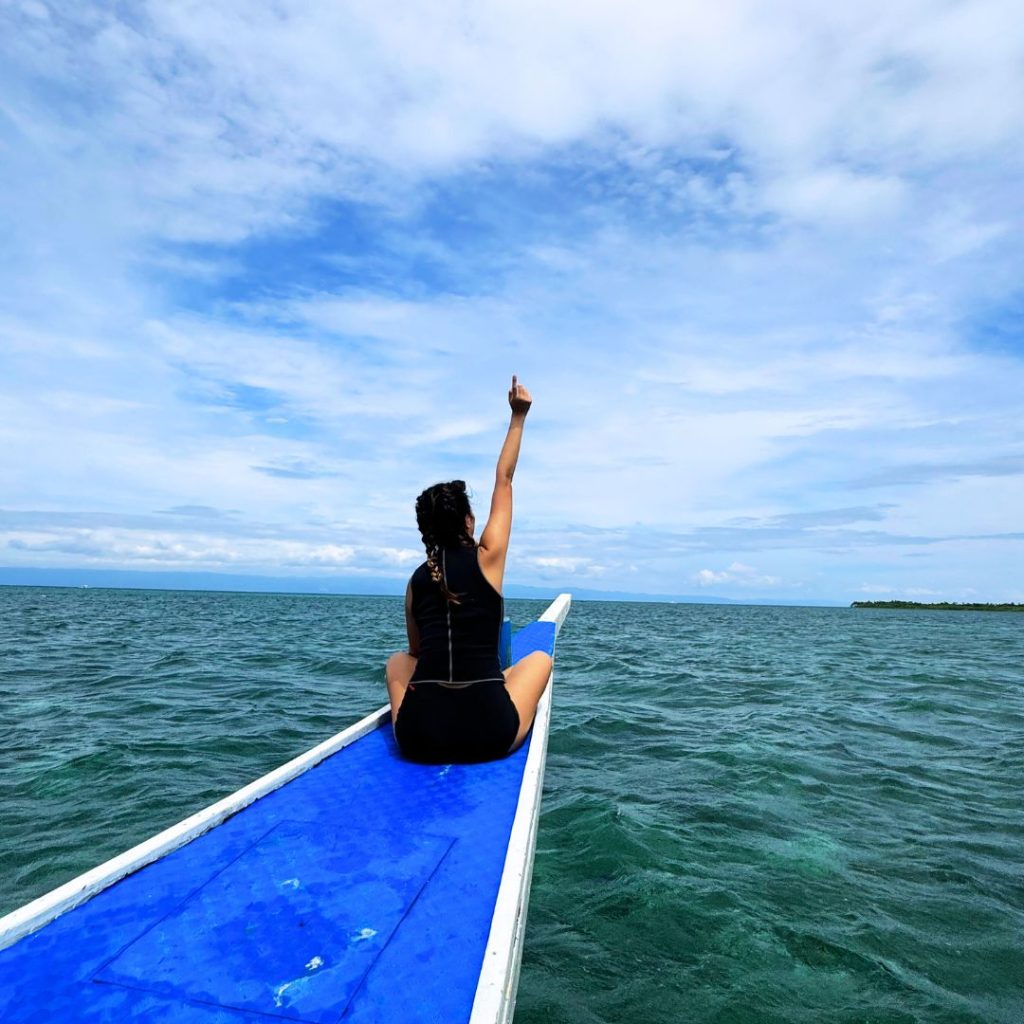
Remember to keep an eye out for the upcoming article “Diving in Bohol” where we’ll take a closer look at the fascinating marine creatures we encountered during our trip, including turtles, sea hares, octopuses, and many more.

